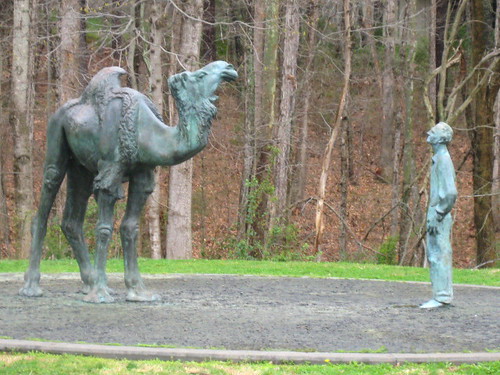The principle [of countercurrent exchange] is also used to conserve heat in the extremities—such as a person’s arms and legs, whale flippers, or the leg of a duck. If a vein returning from an extremity runs closely parallel to the artery feeding the extremity, the blood in the artery will be cooled and the blood in the vein warmed. As a result, the temperature of the extremity will be lower and the heat loss to the surroundings will be reduced.
 |
| How Animals Work, by Knut Schmidt-Nielsen. |
The heat exchange in the nose has a great similarity to the well-known countercurrent heat exchange which takes place, for example, in the extremities of many aquatic animals, such as in the flippers of whales and the legs of wading birds. The body of a whale that swims in water near the freezing point is well insulated with blubber, but the thin streamlined flukes and flippers are uninsulated and highly vascularized and would have an excessive heat loss if it were not for the exchange of heat between arterial and venous blood in these structures. As the cold venous blood returns to the body from the flipper, the vessels run in close proximity to the arteries, in fact, they completely surround the artery, and heat from the arterial blood flows into the returning venous blood, which is thus reheated before it returns to the body (figure 3). Similarly, in the limbs of many animals both arteries and veins split up into a large number of parallel, intermingled vessels each with a diameter of about 1 mm or so, forming a discrete vascular bundle known as a rete…Whether the blood vessels form such a rete system, or in some other way run in close proximity, as in the flipper of the whale, is a question of design and does not alter the principle of the heat recovery mechanism. The blood flows in opposite directions in the arteries and veins, and heat exchange takes place between the two parallel sets of tubes; the system is therefore known as a countercurrent heat exchanger.
 |
| The Camel's Nose: Memoirs of a Curious Scientist, by Knut Schmidt-Nielsen. |
This is a personal story of a life spent in science. It tells about curiosity, about finding out and finding answers. The questions I have tried to answer have been very straightforward, perhaps even simple. Do marine birds drink sea water? How do camels in hot deserts manage for days without drinking when humans could not survive without water for more than a day? How can kangaroo rats live in the desert without any water to drink? How can snails find water and food in the most barren deserts? Can crab-eating frogs really survive in sea water?
These are important questions. The answers not only tell us how animals overcome seemingly insurmountable obstacles in hostile environments; they also give us insight into general principles of life and survival.
 |
| A statue of Knut Schmidt-Nielsen with a camel on the campus of Duke University. |



No comments:
Post a Comment